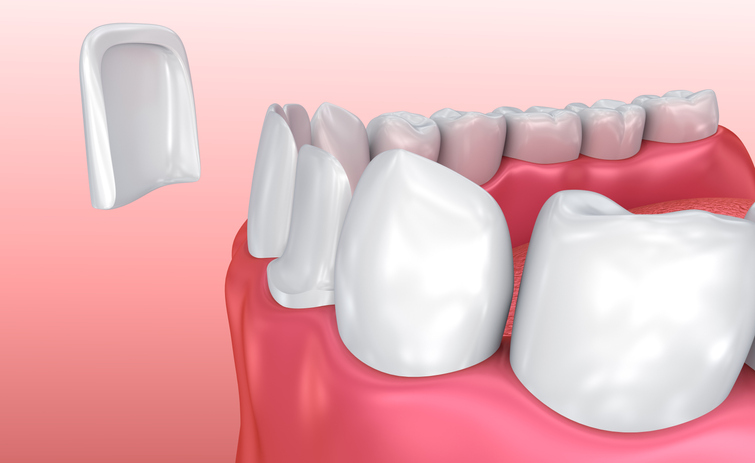
Veneers, especially porcelain veneers, are one of the best and most cost-effective ways to improve your smile. Veneers are especially good for people with discolored or uneven teeth. How popular are veneers? The number of treatments has increased almost 3,000 percent since the early 1980s.

Veneers are very strong, but they are not bulletproof. Biting into a hard substance, like ice or nuts, may cause cracks. Over time, these hairline cracks become more noticeable. Sudden trauma injuries are common as well, such as a wayward elbow in a pickup basketball game.
Since veneer use is so common, and chipped veneer tooth damage is so common as well, Dr. Stone has a number of repair options. The choice usually comes down to the type of veneer and the type of damage.
Kinds of Veneers
Dr. Stone uses both resin and porcelain veneers. Both have some significant pros and cons.
Resin veneers are a lot nicer than they were thirty years ago. That may be the biggest reason that veneer use has increased so much. Resin is usually cheaper than porcelain. Furthermore, Dr. Stone does not have to remove as much tooth enamel to place resin veneers on your teeth.

Now for the bad news. Resin looks a lot better than it did before, but it still does not look as good as porcelain. Furthermore, today’s dental resin is a lot stronger than yesterday’s dental resin. Nevertheless, if you chip a resin veneer tooth, Dr. Stone usually has to redo the entire veneer.
Porcelain veneers are the opposite in many ways. They are more expensive than resin, they look better, and they last longer. Additionally, when you chip a porcelain veneer tooth, replacement is usually the best option, but repair may be possible as well.
Veneer Repair Options
Regardless of the issue, Dr. Stone always believes in trying the easiest and least expensive option. Some chipped veneer tooth repair choices include:
- Buffing: If the damage is still at the aforementioned hairline crack stage, Dr. Stone can often buff out the crack. Dr. Stone also evens out the remainder of the porcelain veneer, so the work still looks natural.
- Composite Filling: If the patient has a larger crack or a chipped veneer tooth, Dr. Stone can fill the crack with resin. This procedure is quite delicate, and only experienced prosthodontists should try it. Furthermore, as mentioned, resin is not as permanent or durable as porcelain. So, there may be problems down the road.
- Rebonding: Sometimes, instead of a chipped veneer tooth, the entire veneer comes loose. If the veneer is still entirely in one piece, rebonding may be possible. But if there is any physical damage whatsoever, replacement is usually the best option.
Overall, porcelain veneers usually last between ten and twenty years. Resin veneers usually last between four and eight years.
A resin or porcelain veneer is usually a very good way to improve your smile. Furthermore, especially if you have porcelain veneers, it may be possible to repair a chipped veneer tooth. For assistance with either placement or repair, contact Dr. John Stone at Best Dental Associates for your initial appointment.

